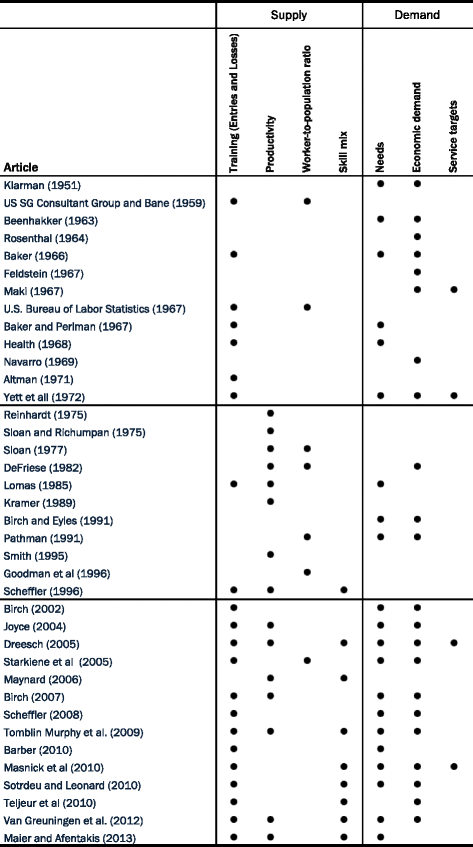Handling healthcare workforce planning with care: where do we stand?
- PMID: 26003337
- PMCID: PMC4464124
- DOI: 10.1186/s12960-015-0028-0
Handling healthcare workforce planning with care: where do we stand?
Abstract
Background: Planning the health-care workforce required to meet the health needs of the population, while providing service levels that maximize the outcome and minimize the financial costs, is a complex task. The problem can be described as assessing the right number of people with the right skills in the right place at the right time, to provide the right services to the right people. The literature available on the subject is vast but sparse, with no consensus established on a definite methodology and technique, making it difficult for the analyst or policy maker to adopt the recent developments or for the academic researcher to improve such a critical field.
Methods: We revisited more than 60 years of documented research to better understand the chronological and historical evolution of the area and the methodologies that have stood the test of time. The literature review was conducted in electronic publication databases and focuses on conceptual methodologies rather than techniques.
Results: Four different and widely used approaches were found within the scope of supply and three within demand. We elaborated a map systematizing advantages, limitations and assumptions. Moreover, we provide a list of the data requirements necessary to implement each of the methodologies. We have also identified past and current trends in the field and elaborated a proposal on how to integrate the different methodologies.
Conclusion: Methodologies abound, but there is still no definite approach to address HHR planning. Recent literature suggests that an integrated approach is the way to solve such a complex problem, as it combines elements both from supply and demand, and more effort should be put in improving that proposal.
Figures



References
MeSH terms
LinkOut - more resources
Full Text Sources
Other Literature Sources
Medical
Miscellaneous

